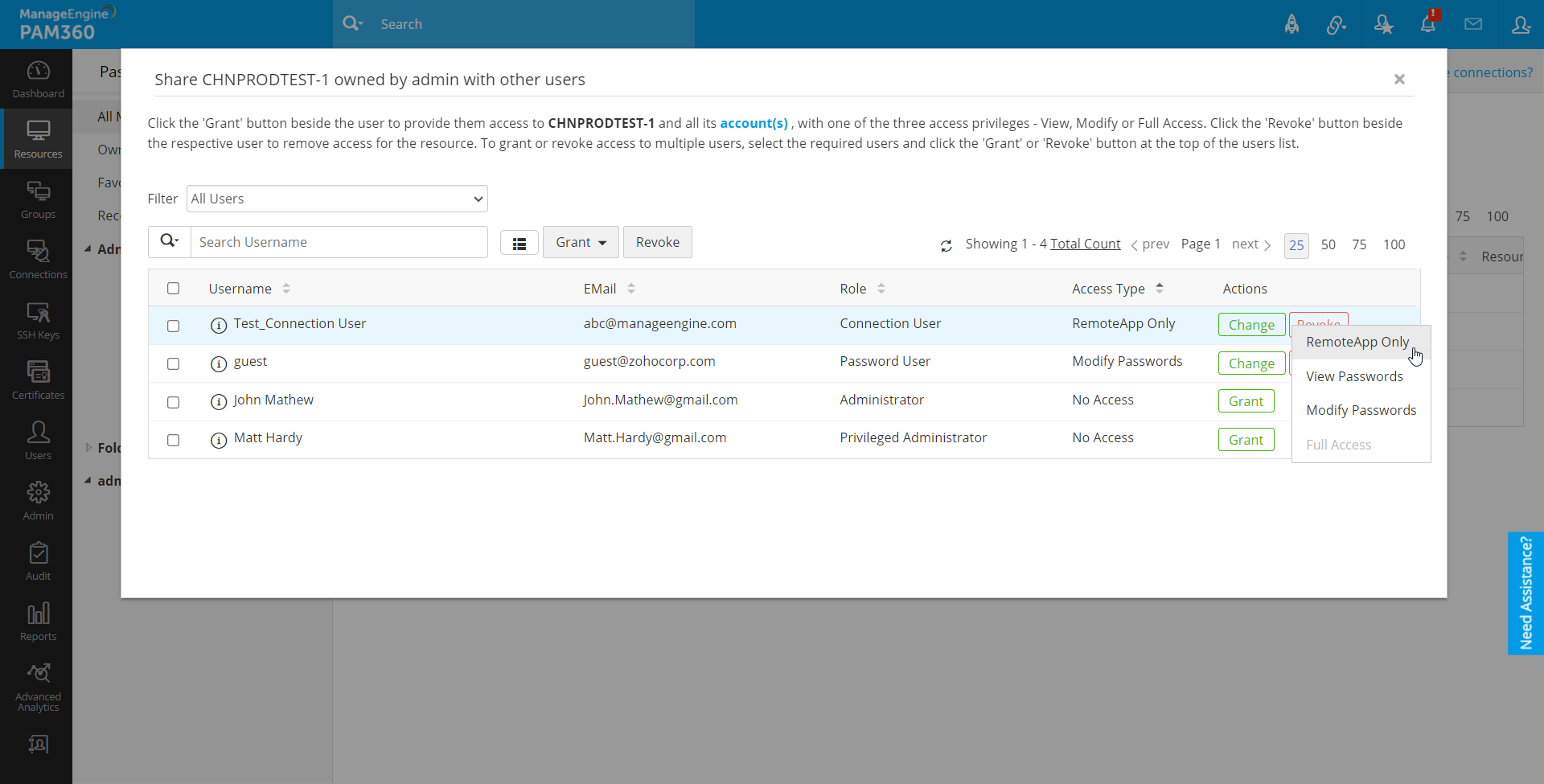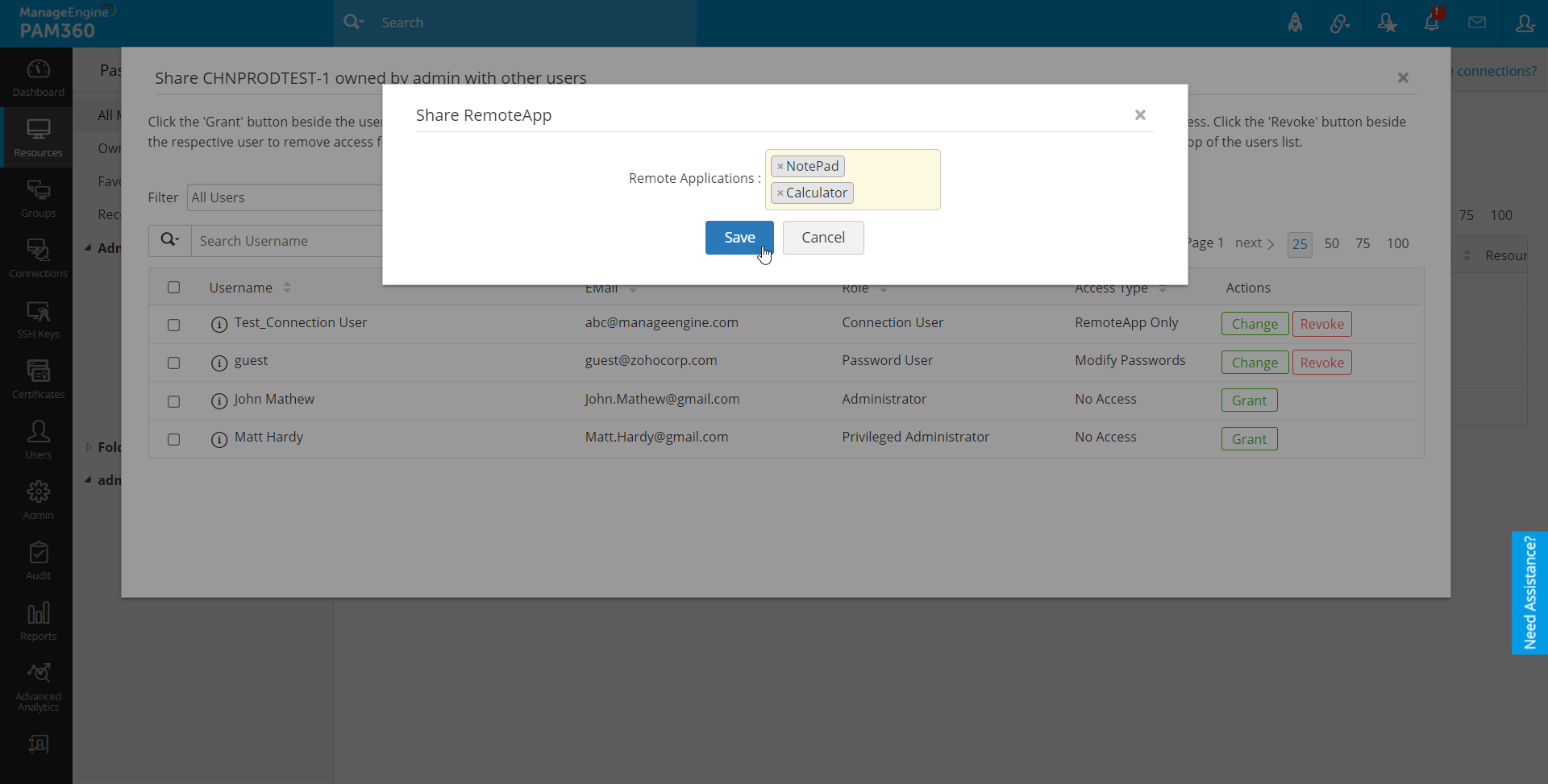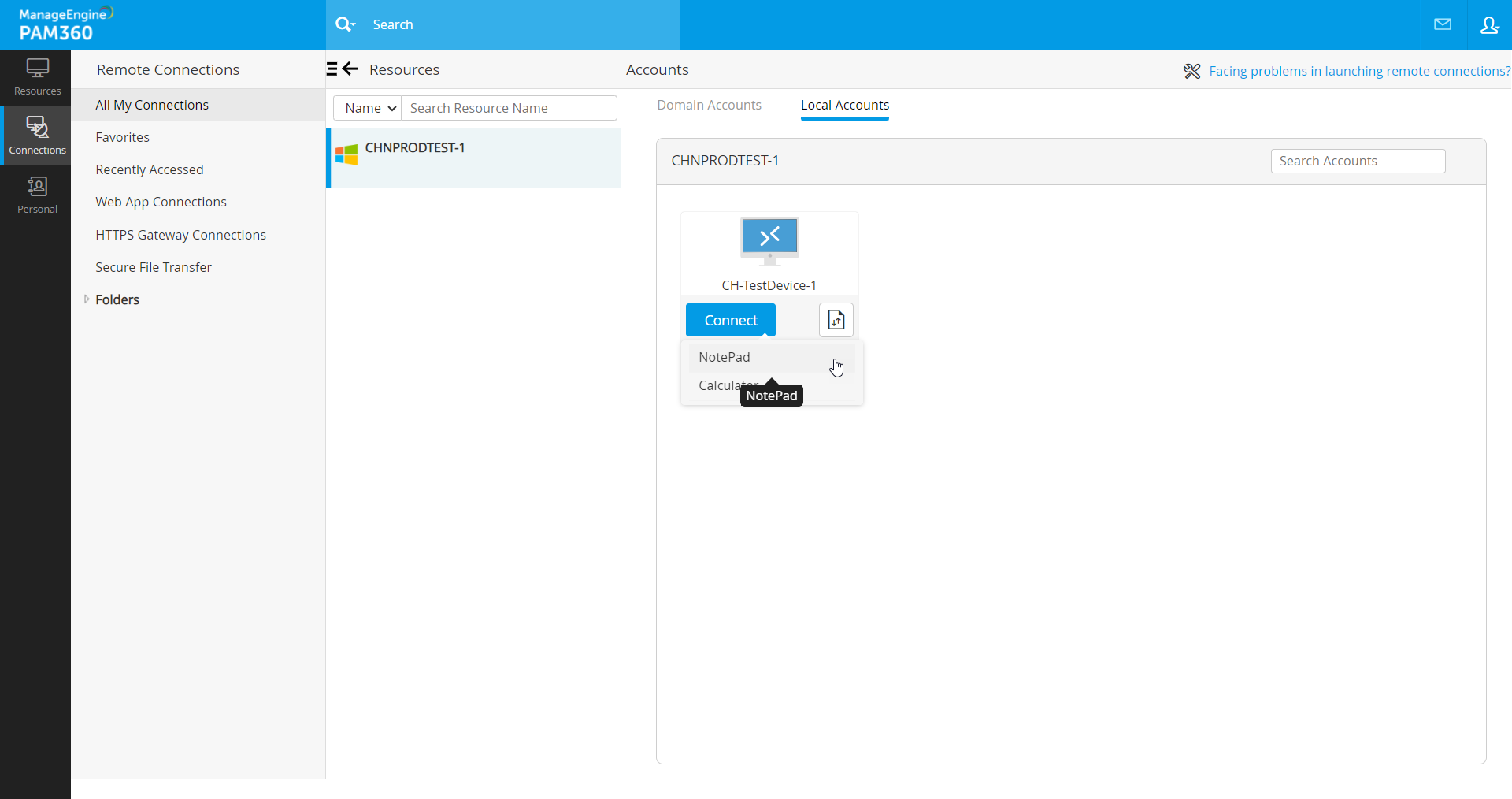Working with RemoteApp
PAM360 allows you to remotely connect to applications (apps) already configured in target systems. Moreover, it allows you to launch direct connections to the remote systems. Adding remote apps to RDP connections increases the accessibility and ease of use when connecting to the remote systems. IT admins use the remote apps to gain easy control over the privileged sessions, as it limits users' access to only specific applications that are launched. For example, a user clicking the RemoteApp configured for Notepad will be able to access only the Notepad application on the remote resource and will not be allowed to access any other programs.
You will be able to perform the following actions on remote apps:
- Adding Remote Apps Manually
- Discovering Remote Apps Automatically
- Associating Remote Apps with a Resource
- Accessing Remote Apps from a Remote Resource
Before you jump to the actions, make sure the following prerequisites are satisfied:
Prerequisites
- To perform an application-based connection in the Windows Domain server via the PAM360 RemoteApp feature, it is required to configure the respective application as a RemoteApp in Windows Domain Server machine. Use our ME_AMP_RemoteApp configuration (section 2, refer from step 1 to 10) document as a reference for configuring your application as a RemoteApp for the Windows Domain Server machine.
- In addition to the above step, make sure you have installed the Microsoft .NET framework and Visual C++ Redistributable (for Visual Studio 2015 and above) in the PAM360 server to discover remote apps automatically.
1. Adding Remote Apps Manually
PAM360 allows you to add remote apps manually via RemoteApp and associate them to the resources based on your requirement. You will be able to access these remote apps only through the associated resources. Follow the steps below to add remote apps to PAM360:
- Navigate to Admin >> Privileged Session >> RemoteApp.
- Click Add.
- In the pop-up that opens, enter the following attributes:
- Name: Enter the name for the remote app to be displayed in PAM360.
- Application Name: Enter the name of the application as it is in the remote system.
- Parameters: Parameters can be a specific folder or a particular file to be opened when the application is invoked. Example: If the application name is notepad.exe, the parameter can be a specific text file to be opened using the NotePad application. This is an optional field.
- Click Save to save changes.

Now, you have successfully added a remote app manually.
2. Discovering Remote Apps Automatically
In addition to manually adding remote apps, PAM360 has the capability to discover remote apps from machines which already have the RemoteApp feature configured in them. Before proceeding with the setup, ensure you have read the prerequisites. Follow the below steps to discover remote apps automatically via RemoteApp:
- Navigate to Admin >> Privileged Session >> RemoteApp.
- Click Discover.
- Select Windows Domain from the Resource Name dropdown.
- From the Account Name dropdown, select the account in which you have configured the RemoteApp feature and published the remote applications.
- Click Fetch to get all the remote apps available from the selected machine. Select the required remote apps and click the Add and Associate button.
- The selected remote app will be added to the RemoteApp dashboard.
- From here, you can associate the remote app to any available connection through the Configure RemoteApp option under Actions.
3. Associating Remote Apps with a Resource
Note: PAM360 supports RemoteApp Only for Windows and Windows Domain resources.
PAM360 allows you to associate the remote apps that were added manually or discovered into PAM360 with a selected resource. After this, you will be able to access these remote apps through the resource. Read further to know about associating the remote apps via RemoteApp:
- Click the Resources tab.
- From the list of available resources, click Resource Actions >> Associate RemoteApp beside the particular resource to which you want to associate the RemoteApp feature.
- In the pop-up that appears, select the apps from the Available Applications column and move them to the Selected Applications column using the arrow keys. Click Save.
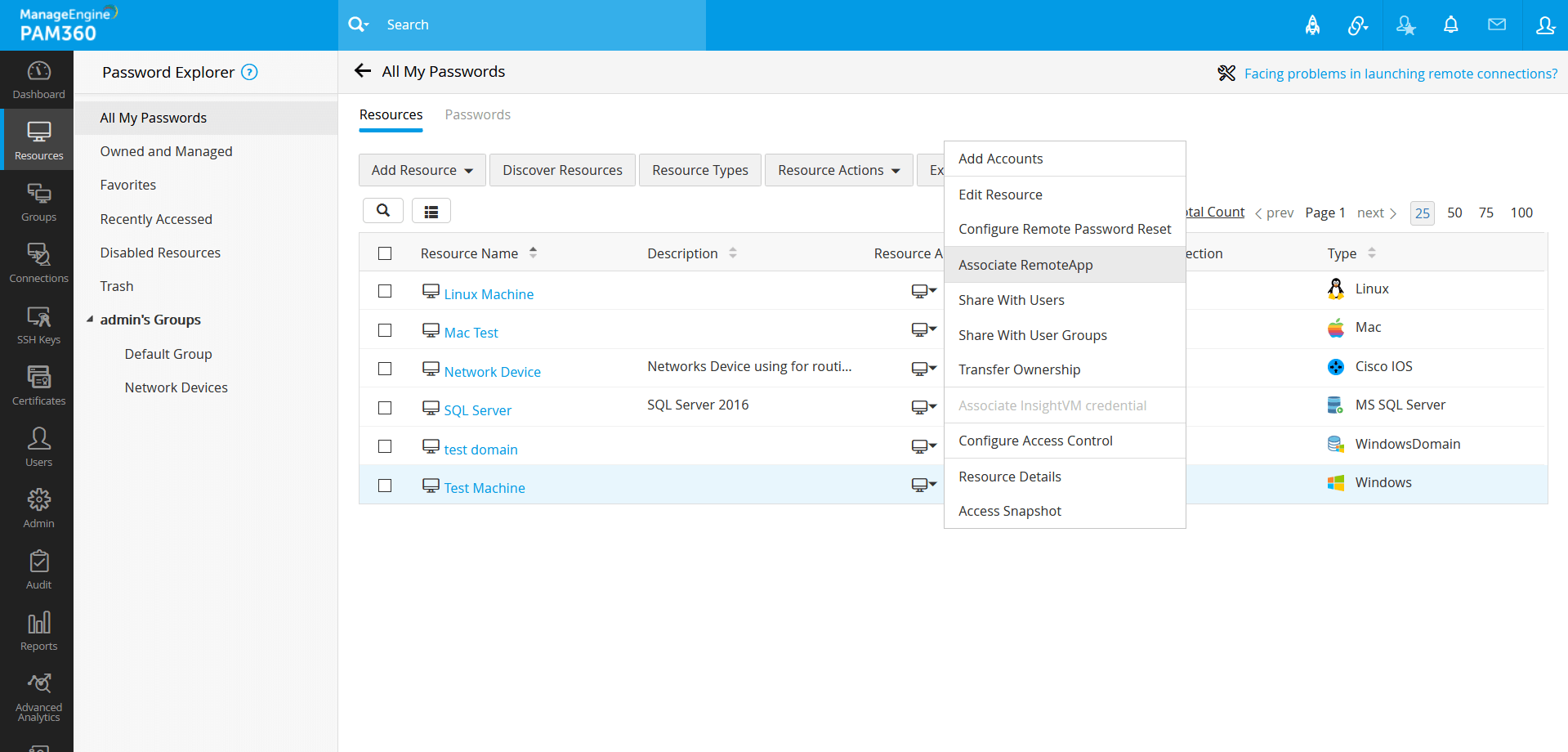
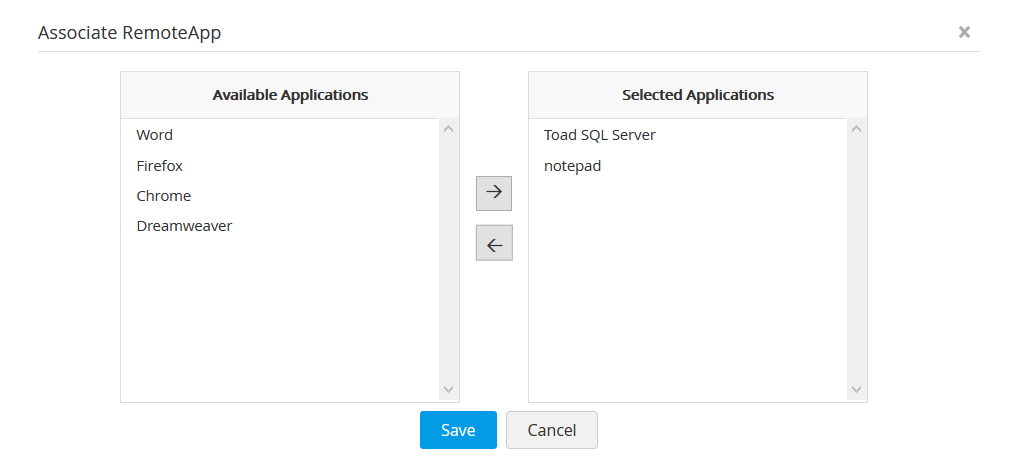
Now, you have successfully associated the remote apps to the selected resource.
4. Accessing Remote Apps from a Remote Resource
Upon remote app association to a resource, Connection Users can access those remote apps when an administrator shares them with the RemoteApp Only permission.
